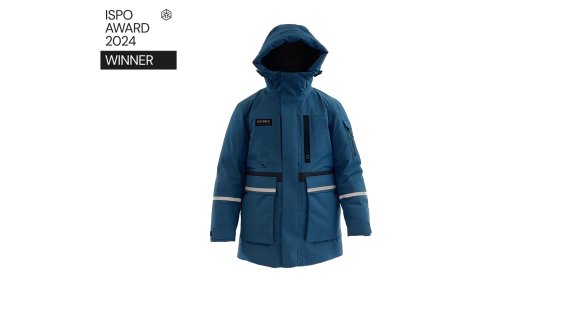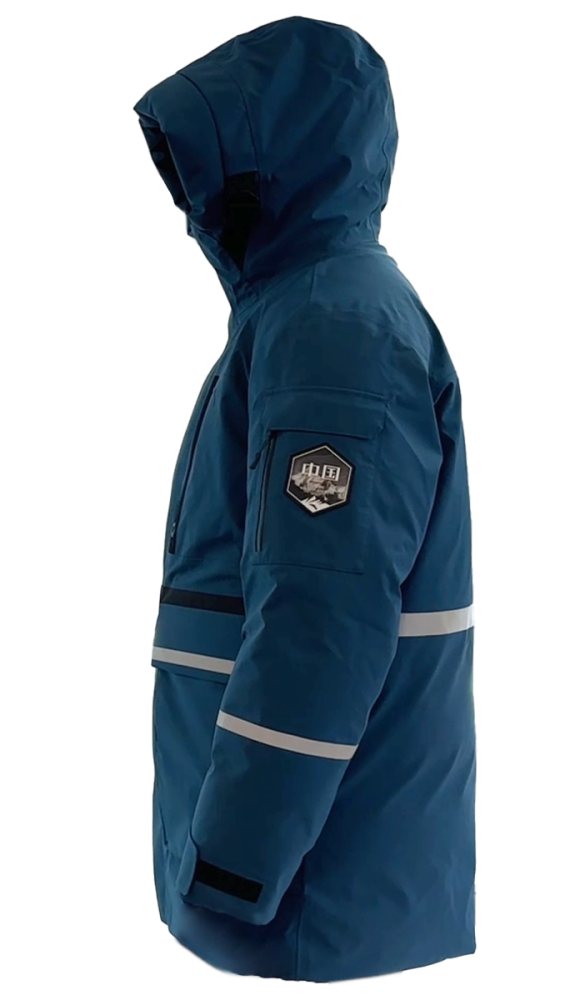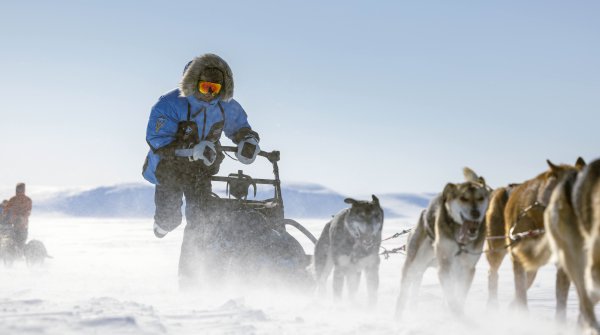
In this down jacket, Anta uses the latest sustainability technologies and combines them to create a high-quality and highly functional jacket. Designed for extreme cold with temperatures as low as minus 40°C, the jacket is designed to provide the necessary protection in increasingly extreme climate conditions.
The jacket is made of a three-layer composite fabric, with both the outer and inner layers consisting of 100 percent carbon-bonded polyester yarn. This innovative material captures carbon dioxide from the atmosphere and converts it into the raw material necessary for polyester fiber polymerization. This reduces dependence on non-renewable petroleum resources and lowers CO2 levels in the atmosphere. In addition, the jacket is treated with bio-based water-repellent and flame-retardant agents that are free of PFOA and PFOS and can withstand many washes. This ensures protection from rain and prevents burns from sparks from outdoor campfires.

The jacket is also equipped with Anta's latest Heat Stream heat circulation system and basalt far-infrared thermal print. The Heat Stream system features a three-dimensional ventilation function that allows for even heat circulation throughout the jacket and prevents localized cold or hot spots. The basalt far-infrared print, made from high-quality volcanic rock from the Taihang Mountains and micronized for better performance, is the same material used for the flag of the Chinese lunar mission Chang'e 6. This material has an impressive far-infrared emission rate of over 95 percent and a radiation temperature increase of up to 5.4°C. Combined with the high-quality RDS-certified down (RDS = Responsible Down Standard), the Heat Stream Down Jacket 3.0 offers exceptional warmth and comfort.
The jacket has an extended hood with an adjustable system to minimize the effect of cold on the face. The front button placket is equipped with a two-layer zipper that uses a waterproof outer zipper and a magnetic snap fastener, further improving windproof and heat-insulating properties. Adjustable Velcro cuffs and a drawstring hem, along with a two-layer adjustable windbreaker on the inside, effectively prevent cold air from entering and reduce the wind-chill effect. A wide, high-visibility reflective stripe on the arms and torso increases visibility.
The jacket will be launched in October 2025.
- 100 percent carbon-bonded polyester yarn in the inner and outer layers
- Bio-based water-repellent and flame-retardant treatment, free of PFOA and PFOS
- Heat Stream heat circulation system and basalt far-infrared thermal printing
 PromotionMulti-functional torch
PromotionMulti-functional torch
- Awards
- Mountain sports
- Bike
- Fitness
- Health
- ISPO Munich
- Running
- Brands
- Sustainability
- Olympia
- OutDoor
- Promotion
- Sports Business
- Textrends
- Triathlon
- Water sports
- Winter sports
- eSports
- SportsTech
- OutDoor by ISPO
- Heroes
- Transformation
- Sport Fashion
- Urban Culture
- Challenges of a CEO
- Trade fairs
- Sports
- Find the Balance
- Product reviews
- Newsletter Exclusive Area
- Magazine



